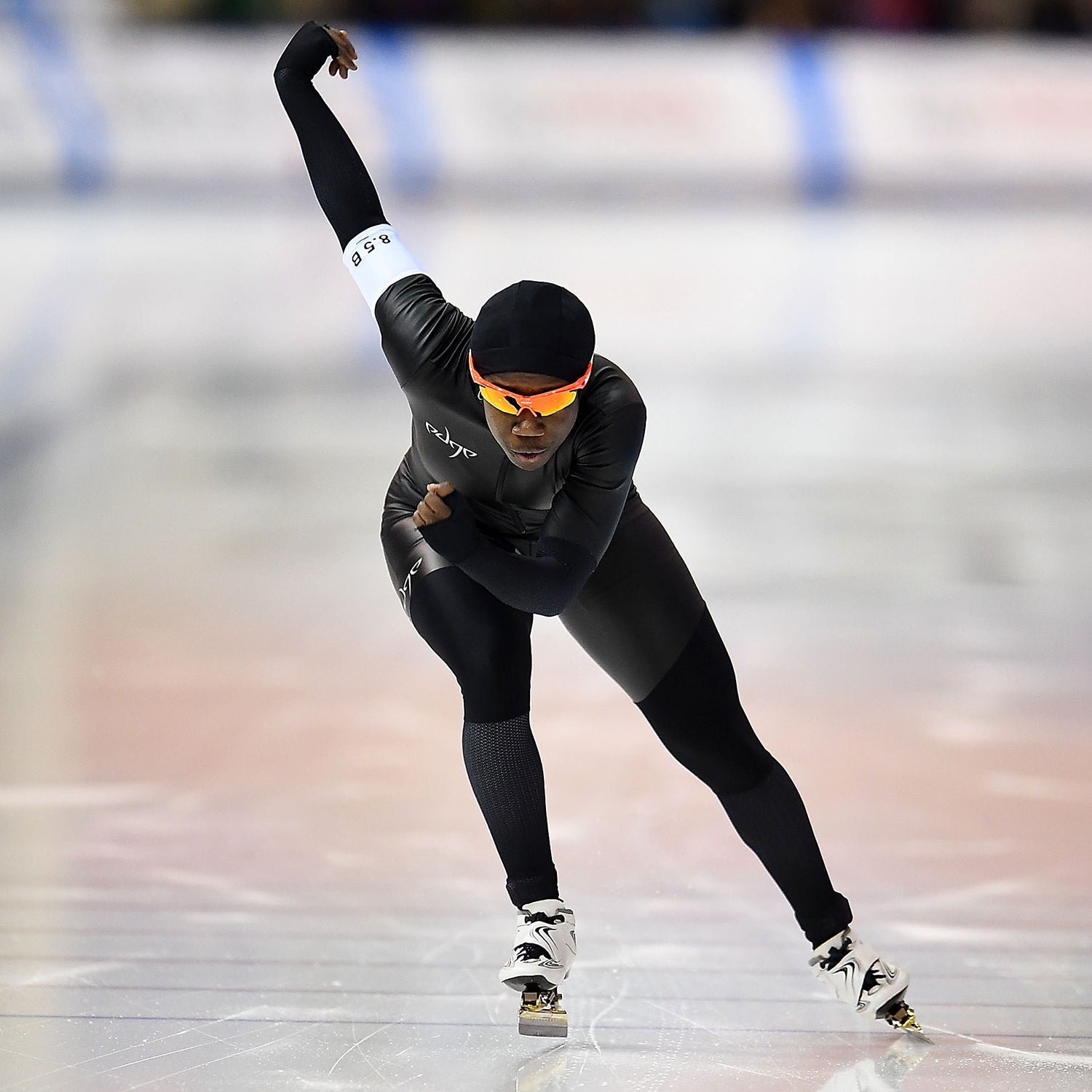In January, 25-year-old became the first African-American woman to make a U.S. Olympic team in long-track speedskating. And she did it just a year after strapping on her first pair of blades. Originally an inline skater, Jackson continued as a member of both Team USA Roller Derby and Inline Team USA while training for Pyeongchang. (She’s competed with the derby team for the past year and the inline team since 2008.)
Jackson’s quick transition from inline skating to the ice garnered a lot of , but it was her only shot at the Olympics, and the same path is becoming increasingly common for young skaters. For the past two decades, U.S. Speedskating has made a concerted effort to transition inline skaters like Jackson over to ice, after recognizing that access to the sport’s few traditional 400-meter training tracks was a detriment to the sport’s growth. The formula has reenergized the sport and has resulted in more athletes bringing home medals from both world championships and the Olympics.
Inline speedskaters are particularly well-suited to ice, thanks to the similarities between the two sports. There are some technique contrasts—wheels require more force than blades to generate speed, for instance—but the two disciplines share more commonalities than differences. Inline skaters compete both on the road (in races from 5K to 100K) and indoors (on 100-meter courses). The former translates well to long track, which is the traditional 400-meter oval version, and the latter to short track.
Heading into the Pyeongchang games this month, the looks stronger than ever. Repeat Olympians include standouts Joey Mantia and Heather Bergsma, both of whom began their careers with inline skating. “Before Lillehammer, the talent pool for ice was relatively small,” says former inline skater and Olympic medalist Derek Parra, director of sports at the . “Inline skating has had a very positive impact on the program.”
Speedskating has long flown under the radar in the American consciousness. The first time it captivated a U.S. audience was the 1988 Winter Olympics in Calgary, when all eyes were on American world record holder Dan Jansen, a favorite to medal in the 500 meters and 1,000 meters in long track. Jansen’s sister died of leukemia the morning of his first race of the games. He fell in both his events and slipped away from the limelight until the 1992 Albertville Games, where he again failed to medal. Jansen returned a final time to win gold in the 1,000 in the 1994 Lillehammer Games, cementing his place in spectators’ memories.
The formula has reenergized the sport and has resulted in more athletes bringing home medals from both world championships and the Olympics.
As Jansen captured the hearts of U.S. fans, another American was preparing to make his Olympic debut. KC Boutiette was a brash, smack-talking 24-year-old inline skater from Tacoma, Washington, looking to sharpen his skills for the roads. “KC showed up to the Milwaukee training center and surprised everyone by making the team,” says Parra. “He opened the doors for the rest of us.”
took note and began scouring the nation for inline talent. While roller sports had applied time and again to be part of the Olympics, they had not succeeded, giving the ice version of the sport a special allure. Watching Boutiette excel encouraged a new wave of inline racers—many of them national and world champions—to attempt the transition. “They took us on and provided everything we needed to adapt to ice,” says Parra.
The gamble paid off at the 2002 Salt Lake City Games, when four Americans medaled in speedskating events. Later that year, Parra collaborated with the U.S. Olympic Committee and USA Speedskating to create the Wheels to Ice Program (WhIP). “I took ten athletes and passed along everything I knew,” Parra says. “Many of them went on to make national, world, and Olympic teams.”
In the ensuing years, inline skaters have continued to contribute heavily to the ice speedskating team rosters, even as many, like Jackson, have continued to compete on wheels at the same time. “When you look at how many inline skaters we have on the team, it speaks volumes for what it does for ice success,” she says.
Jackson came into the program through the ’s transition program, something of a wider-reaching, updated version of WhIP. At first, she says she found the transition to ice frustrating. “But it was a good frustration—the kind that motivates.”
Ryan Shimabukuro, Jackson’s coach, heads up the ISU transition program. “When we first got her on ice, we focused on the technical component of the sport, learning to use her hips more instead of relying mostly on quad strength,” he says. “After she returned from the inline world championships this fall, we began incorporating physiological training, getting her body accustomed to essentially sitting in a squat and tolerating a higher lactate buildup.”
Together, Shimabukuro and Jackson came up with a plan to fast-track her to success. “I started picking up extra training wherever I could get it,” Jackson says. “I had to break down a lot of old inline habits, like sitting up too high, to get it right.” About a month out from the January trials, everything started to click for her. Shimabukuro says it was perfect timing. “She’s very coachable and analytical, and she never complains. She just puts her head down and trains.”
As she approaches the games, Jackson’s eyes are focused firmly on the clock. “If I can keep bringing my times down, I’ll be happy,” she says. “As an underdog, I’ve already accomplished my goals, and everything else is icing.”
No matter her results in Pyeongchang, Jackson recognizes her unique position as an African-American woman in speedskating and sees an opportunity to inspire future champions. “There aren’t many people of color in the Winter Olympics,” she says, “so maybe this will introduce the sport to younger kids and show them some representation.”


